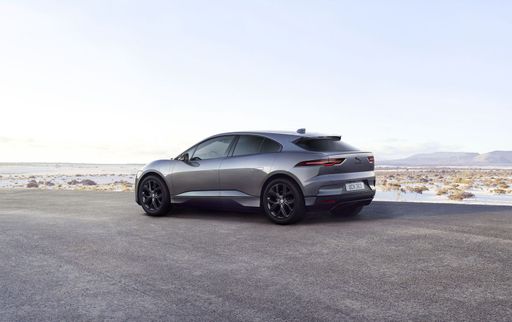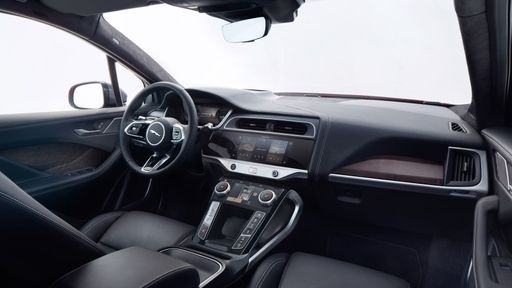Jaguar I-Pace vs Tesla Model X – Which one offers the better deal?
Compare performance, boot capacity, efficiency and price at a glance.
Find out which car is the better choice for you – Jaguar I-Pace or Tesla Model X?
Costs and Efficiency:
Price and efficiency are often the first things buyers look at. Here it becomes clear which model has the long-term edge – whether at the pump, the plug, or in purchase price.
Jaguar I-Pace has a distinct advantage in terms of price – it starts at 79200 £, while the Tesla Model X costs 98600 £. That’s a price difference of around 19362 £.
In terms of energy consumption, the advantage goes to the Tesla Model X: with 19.10 kWh per 100 km, it’s clearly perceptible more efficient than the Jaguar I-Pace with 25.20 kWh. That’s a difference of about 6.10 kWh.
As for range, the Tesla Model X performs a bit better – achieving up to 576 km, about 107 km more than the Jaguar I-Pace.
Engine and Performance:
Under the bonnet, it becomes clear which model is tuned for sportiness and which one takes the lead when you hit the accelerator.
When it comes to engine power, the Tesla Model X has a decisively edge – offering 1020 HP compared to 400 HP. That’s roughly 620 HP more horsepower.
In acceleration from 0 to 100 km/h, the Tesla Model X is clearly quicker – completing the sprint in 2.60 s, while the Jaguar I-Pace takes 4.80 s. That’s about 2.20 s faster.
In terms of top speed, the Tesla Model X performs clearly perceptible better – reaching 262 km/h, while the Jaguar I-Pace tops out at 200 km/h. The difference is around 62 km/h.
Space and Everyday Use:
Cabin size, boot volume and payload all play a role in everyday practicality. Here, comfort and flexibility make the difference.
Both vehicles offer seating for 5 people.
In curb weight, Jaguar I-Pace is barely noticeable lighter – 2226 kg compared to 2415 kg. The difference is around 189 kg.
In terms of boot space, the Jaguar I-Pace offers evident more room – 638 L compared to 425 L. That’s a difference of about 213 L.
In maximum load capacity, the Tesla Model X performs clearly better – up to 2497 L, which is about 1044 L more than the Jaguar I-Pace.
When it comes to payload, Tesla Model X slight takes the win – 460 kg compared to 444 kg. That’s a difference of about 16 kg.
Who wins the race?
The Tesla Model X proves to be outperforms in nearly all aspects and therefore becomes our DriveDuel Champion!
Tesla Model X is the better all-rounder in this comparison.
Tesla Model X
Jaguar I-Pace
The Jaguar I-Pace represents a remarkable fusion of cutting-edge electric performance and iconic British luxury. With its sleek design and spacious interior, this model redefines what one can expect from an electric vehicle in terms of style and comfort. Its impressive driving dynamics and advanced technology make it a standout choice for those looking to make a statement on the road.
details @ media.jaguar.com
@ media.jaguar.com
 @ media.jaguar.com
@ media.jaguar.com
 @ media.jaguar.com
@ media.jaguar.com
Tesla Model X
The Model X stands out in the electric SUV market with its striking falcon-wing doors and spacious interior, providing both style and practicality. Its exceptional range and impressive performance make it a standout choice for environmentally-conscious drivers seeking a luxurious experience. With advanced technology features and a strong focus on safety, the Model X redefines what an electric vehicle can be.
details

|
|
|
|
|
Costs and Consumption |
|
|---|---|
|
Price
79200 - 85500 £
|
Price
98600 - 107100 £
|
|
Consumption L/100km
-
|
Consumption L/100km
-
|
|
Consumption kWh/100km
25.20 kWh
|
Consumption kWh/100km
19.1 - 20.8 kWh
|
|
Electric Range
469 km
|
Electric Range
543 - 576 km
|
|
Battery Capacity
84.70 kWh
|
Battery Capacity
-
|
|
co2
0 g/km
|
co2
0 g/km
|
|
Fuel tank capacity
-
|
Fuel tank capacity
-
|
Dimensions and Body |
|
|---|---|
|
Body Type
SUV
|
Body Type
SUV
|
|
Seats
5
|
Seats
5
|
|
Doors
5
|
Doors
5
|
|
Curb weight
2226 kg
|
Curb weight
2415 - 2510 kg
|
|
Trunk capacity
638 L
|
Trunk capacity
425 L
|
|
Length
4682 mm
|
Length
5036 mm
|
|
Width
2011 mm
|
Width
1999 mm
|
|
Height
1566 mm
|
Height
1684 mm
|
|
Max trunk capacity
1453 L
|
Max trunk capacity
2497 L
|
|
Payload
444 kg
|
Payload
460 kg
|
Engine and Performance |
|
|---|---|
|
Engine Type
Electric
|
Engine Type
Electric
|
|
Transmission
Automatic
|
Transmission
Automatic
|
|
Transmission Detail
Reduction Gearbox
|
Transmission Detail
-
|
|
Drive Type
All-Wheel Drive
|
Drive Type
All-Wheel Drive
|
|
Power HP
400 HP
|
Power HP
670 - 1020 HP
|
|
Acceleration 0-100km/h
4.80 s
|
Acceleration 0-100km/h
2.6 - 3.9 s
|
|
Max Speed
200 km/h
|
Max Speed
250 - 262 km/h
|
|
Torque
696 Nm
|
Torque
-
|
|
Number of Cylinders
-
|
Number of Cylinders
-
|
|
Power kW
294 kW
|
Power kW
493 - 750 kW
|
|
Engine capacity
-
|
Engine capacity
-
|
General |
|
|---|---|
|
Model Year
2023
|
Model Year
2022 - 2023
|
|
CO2 Efficiency Class
A
|
CO2 Efficiency Class
A
|
|
Brand
Jaguar
|
Brand
Tesla
|
What drivetrain options does the Jaguar I-Pace have?
Available configurations include All-Wheel Drive.
The prices and data displayed are estimates based on German list prices and may vary by country. This information is not legally binding.
